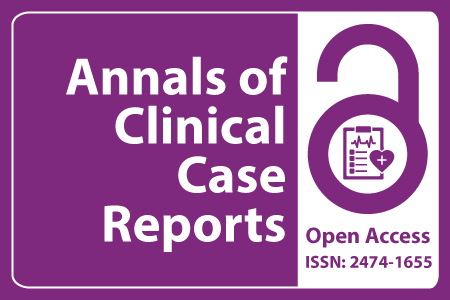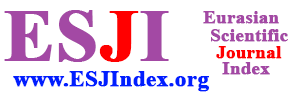
Journal Basic Info
- Impact Factor: 1.809**
- H-Index: 6
- ISSN: 2474-1655
- DOI: 10.25107/2474-1655
Major Scope
- Forensic and Legal Medicine
- Hepatitis
- Emergency Medicine and Critical Care
- Radiology Cases
- Neurology
- Sleep Medicine and Disorders
- Surgery Cases
- Respiratory Medicine
Abstract
Citation: Ann Clin Case Rep. 2022;7(1):2212.DOI: 10.25107/2474-1655.2212
Are Older Women More Susceptible to Dress Syndrome? A Case Series and Literature Review
Anna Licata*, Silvia Como, Maria Giovanna Minissale, Laura Lo Scrudato, Giada Piras Grimaldi, Maddalena Zerbo, Lydia Giannitrapani, Luigi Mirarchi, Simona Amodeo, Giuseppe Montalto and Maurizio Soresi
Department of Health Promotion Sciences, Maternal and Infant Care, Internal Medicine and Medical Specialties, PROMISE; University of Palermo School of Medicine, Italy
*Correspondance to: Anna Licata
PDF Full Text Case Series | Open Access
Abstract:
Background & Aims: We report a case series of women presenting with an Adverse Drug Reaction (ADR), classified according to RegiSCAR criteria as Drug Rash Eosinophilia and Systemic Symptoms Syndrome (DRESS), seen at our Internal Medicine Unit between 2012 and 2019. Our aim was to analyze the clinical pattern of each case/medical report and to highlight the various critical issues arising from a systemic ADR resulting in a severe prognosis and, in some cases, death. Methods: A systematic search of medical records in the databases of the Unit of Internal Medicine was carried out from 2012 to 2020. For each patient, clinical features, diagnostic tests, and prognostic and therapeutic data were assessed. Results: All the reported clinical cases were women, with a mean age of 68 years, most of them treated with allopurinol. The time lapse between drug intake and the onset of symptoms was about 3 weeks, and all the women presented with a skin rash. The main organ involved was the liver (53%); half of the patients reported kidney failure, whereas involvement of the lungs and bowel was 42% and 28%, respectively. Five of the six cases examined showed serological hypereosinophilia. Fever was the main symptom in half of the cases. More than 80% of them received corticosteroids, as well as supportive and antibiotic treatment. Two patients recovered; four patients died due to severe complications. Conclusion: DRESS is a severe systemic ADR and allopurinol is usually the culprit drug. Careful assessment should be recommended before its prescription in elderly women with chronic kidney disease, at cardiovascular risk and/or following poly-pharmacological treatment.
Keywords:
DRESS Syndrome; Clinical Outcome; Liver damage; Allopurinol
Cite the Article:
Licata A, Como S, Giovanna Minissale M, Lo Scrudato L, Piras Grimaldi G, Zerbo M, et al. Are Older Women More Susceptible to Dress Syndrome? A Case Series and Literature Review. Ann Clin Case Rep. 2022; 7: 2212..













